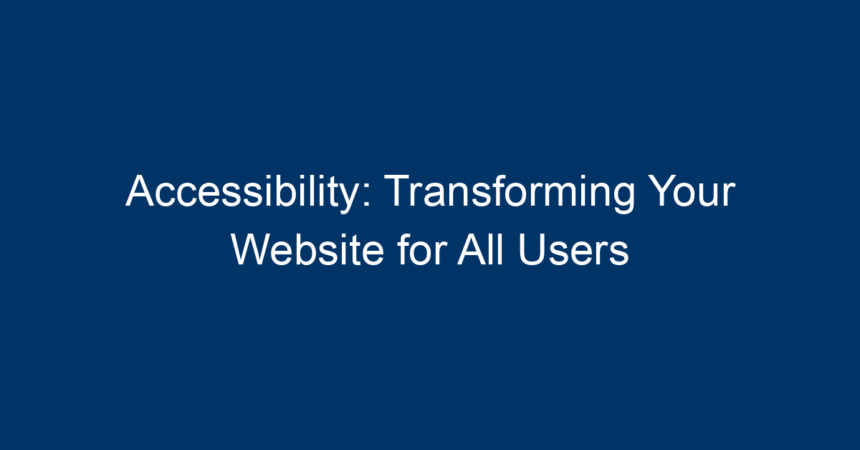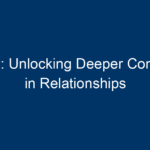In today’s digital landscape, the importance of web accessibility cannot be overstated. A website that prioritizes accessibility ensures that everyone—regardless of their abilities or disabilities—can navigate, understand, and interact with the content effectively. In this article, we will explore how to transform your website for all users, discuss the key components of accessibility, and provide actionable insights to help you create an inclusive online environment.
What is Web Accessibility?
Web accessibility refers to the design and development of websites that can be accessed and navigated by all individuals, including those with various disabilities. This includes visual impairments, hearing loss, motor disabilities, and cognitive limitations. By adhering to web accessibility standards, such as the World Wide Web Consortium’s (W3C) Web Content Accessibility Guidelines (WCAG), you can create a more inclusive digital experience.
Why Accessibility Matters
-
Inclusivity: Making your website accessible means that everyone, regardless of ability, can enjoy your content. This expands your audience and fosters a sense of community.
-
Legal Compliance: Many countries have enacted laws and regulations, such as the Americans with Disabilities Act (ADA) in the U.S., mandating that organizations make their websites accessible. Failing to do so can lead to legal repercussions.
-
Improved User Experience: Accessible websites are generally easier to navigate, which enhances the experience for all users, not just those with disabilities. This can lead to lower bounce rates and higher engagement.
- SEO Benefits: Accessibility features such as alt text for images, structured headings, and descriptive link texts contribute positively to search engine optimization (SEO). This makes your site more discoverable, boosting traffic.
Key Components of Web Accessibility
1. Text Alternatives
Providing text alternatives for non-text content is essential for users with visual impairments who depend on screen readers. Every image should have a descriptive alt attribute that conveys its meaning. This helps ensure that all users can understand the context of the content.
2. Keyboard Navigation
Many users with motor disabilities rely on keyboard navigation to interact with digital content. Ensure that all interactive elements on your site—such as forms, buttons, and links—are accessible using a keyboard. Test your website’s navigation by attempting to move through various sections using only the keyboard.
3. Color Contrast
Color is often an integral part of web design, but it can create barriers for those with visual impairments. Ensure that your website maintains sufficient contrast between text and background colors. Use tools like the WebAIM Contrast Checker to evaluate your color choices and apply proper color contrast ratios.
4. Responsive Design
Today, users are increasingly accessing websites from a variety of devices. Responsive design ensures that your website functions smoothly on desktops, tablets, and smartphones. This adaptability not only enhances user experience but also improves accessibility for individuals who may rely on smaller screens.
5. Clear and Consistent Navigation
Complicated navigation can confuse users, especially those with cognitive disabilities. Ensure that your website’s navigation is straightforward and consistent. Use clear labels for menus and links, and maintain a predictable layout across different pages.
6. Use of Headings and Structure
Proper heading structure not only aids SEO but also enhances accessibility. Use headings (H1, H2, H3, etc.) to create a clear hierarchy and organization of content. This helps screen readers provide an outline of the page, allowing users to easily understand and navigate your website.
7. Captioning and Transcripts
For users with hearing impairments, providing captions for videos is crucial. Additionally, offering transcripts for audio content ensures that all users can access the information. This not only improves accessibility but also enriches the user experience for those who may prefer reading or require additional context.
How to Audit Your Website for Accessibility
1. Use Accessibility Evaluation Tools
Several online tools can help you identify accessibility issues on your website. Tools like WAVE, AXE, and Lighthouse provide insights into potential barriers and recommend fixes.
2. Conduct User Testing
Nothing beats firsthand experience. Engage users with disabilities to navigate your website and provide feedback. Their insights can uncover real-world challenges that automated tools might miss.
3. Manual Checks
While automated tools are invaluable, manual checks are equally essential. Review your website for common accessibility issues, such as missing alt text, keyboard navigation issues, and low color contrast.
Implementing Accessibility: An Action Plan
-
Evaluate Your Current Website: Use the tools and methods discussed to audit your site’s accessibility.
-
Develop a Strategy: Create a plan addressing identified issues. Prioritize changes based on severity and user impact.
-
Engage Stakeholders: Involve key team members—designers, developers, content creators, and user experience professionals—in the implementation process.
-
Implement Changes: Begin making the necessary adjustments to your website based on your strategy.
-
Test Regularly: Accessibility is a continuous effort. Regularly reassess your website with user feedback and tool audits to ensure compliance and effectiveness.
-
Stay Informed: Accessibility standards are continually evolving. Commit to ongoing learning about best practices and technological advancements in web accessibility.
- Create an Accessibility Statement: Inform users about your commitment to accessibility. Include information on how users can report issues and what steps you’re taking to improve.
Real-Life Examples of Accessible Websites
-
BBC: The BBC website is known for its robust accessibility features, including alt text for images and keyboard navigation.
-
Apple: Apple incorporates accessibility into all its products, with its website reflecting these values through features like text alternatives and adjustable text size.
- W3C: The World Wide Web Consortium, which develops accessibility standards, exemplifies best practices on its own website, emphasizing inclusivity and usability.
Conclusion
Creating an accessible website is not just a legal requirement; it’s an ethical obligation that enhances your reach and fosters a more inclusive digital community. By prioritizing accessibility, you not only improve the user experience for individuals with disabilities but also enhance overall engagement, boost SEO, and broaden your audience.
As you embark on this journey, remember that accessibility is an ongoing commitment—an evolving part of your web strategy. With a focus on inclusivity, you can transform your website into a welcoming space for all users. Begin today by assessing your current practices, engaging with users, and implementing the strategies discussed in this article. The digital world should be an open door for everyone, and with a little effort, you can help make that a reality.




